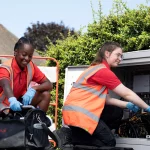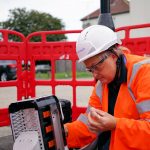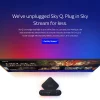BT Openreach Sets UK ISP Dark Fibre Access Trial for August 2017
Openreach (BT) has informed Ethernet offering ISPs that they intend to run a provision trial of their new Dark Fibre Access (DFA) product between August and September 2017, which is right before it’s officially due to launch on 1st October 2017.
The DFA product gives rival ISPs “physical access” to Openreach’s fibre optic cables (i.e. allows them to “take direct control of the connection“), which means that they can then install their own equipment at either end of the optical fibre within Openreach’s cable ducts.
Ofcom, which has been pushing for DFA since early 2016, believes that it could deliver both more market competition and speed-up the roll-out of faster broadband services around the UK (e.g. backhaul capacity to support new networks). However big infrastructure builders like BT, Virgin Media, Cityfibre and Zayo fear that it may discourage similar operators from investing to build their own fibre optic networks (here).
Advertisement
Never the less Openreach recently published their Final Draft Reference Offer for the product, which has been based off their 1Gbps capable Ethernet Access Direct (EAD) service (details). Naturally the next step will be to conduct a trial of the service and that will begin in August 2017, although exact dates have yet to be set (we expect this to be announced during May 2017).
ISPreview.co.uk has been informed that the trial, which will also involve raising faults in order to test the repair solution up to KCI2 (‘Keeping Customer Informed‘ – this reflects part of the early order journey), will be made available to the first 10 ISPs who register. On top of that it will be limited in availability to the cities of London, Birmingham, Manchester and Liverpool only.
NOTE: It’s important not to confuse DFA with Ofcom’s wholesale Duct and Pole Access (DPA) remedy, which will give rivals access to install their own cables via Openreach’s underground cable ducts and telegraph poles (i.e. two different sides of the same coin). Cityfibre and others welcome DPA, even if a few of them have had trouble using it (here and here).
Mark is a professional technology writer, IT consultant and computer engineer from Dorset (England), he also founded ISPreview in 1999 and enjoys analysing the latest telecoms and broadband developments. Find me on X (Twitter), Mastodon, Facebook, BlueSky, Threads.net and Linkedin.
« The UK Impact of Full to Capacity FTTC “Fibre Broadband” Cabinets


















































Comments are closed